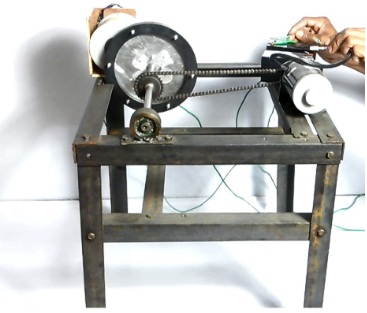Basic Introduction or Principle: We all are aware with the term "Generator". A device which converts mechanical energy into electrical energy is known as generator. This generator makes rotate with the help of some kind of external energy. When this energy extract from the energy of steam, the plant is known as steam power plant. A simple steam plant works on Rankine cycle. In the first step, water is feed into a boiler at a very high pressure by BFP (boiler feed pump). This high pressurized water is heated into a boiler which converts it into high pressurized super heated steam. This high energized steam passes through steam turbine (a mechanical device which converts flow energy of fluid into mechanical energy) and rotate it. Owing to extract full energy of steam, three stage turbines is used which is known as LPT (Low pressure turbine), IPT (intermediate pressure turbine) and HPT (High pressure turbine). The turbine shaft is connected to the...
Automated Portable Hammering Machine Hammering is the most widely used industrial as well as construction activity. Hammering or screws, metal sheets, parts etc requires a lot of time and effort. So here we propose an automated hammering system that allows for fully automatic hammering process. This allows for accurate, fast and automated hammering wherever and whenever needed using a 12V battery. The person just needs to insert workpeice and start the hammering machine. This machine can be used for automatic hammering work as and when needed. We here use a dc motor in order to move the hammer. The DC motor consists of a pulley attached to it which is connected to a larger pulley for efficient power transfer and to increase torque. This large pulley is connected to a shaft that has a connecting rod attached to it. This rod is used to achieve lateral motion from the spinning shaft. We now connect the other end of hammer to this connecting rod through a mid swinging arrangement in ...

Comments
Post a Comment